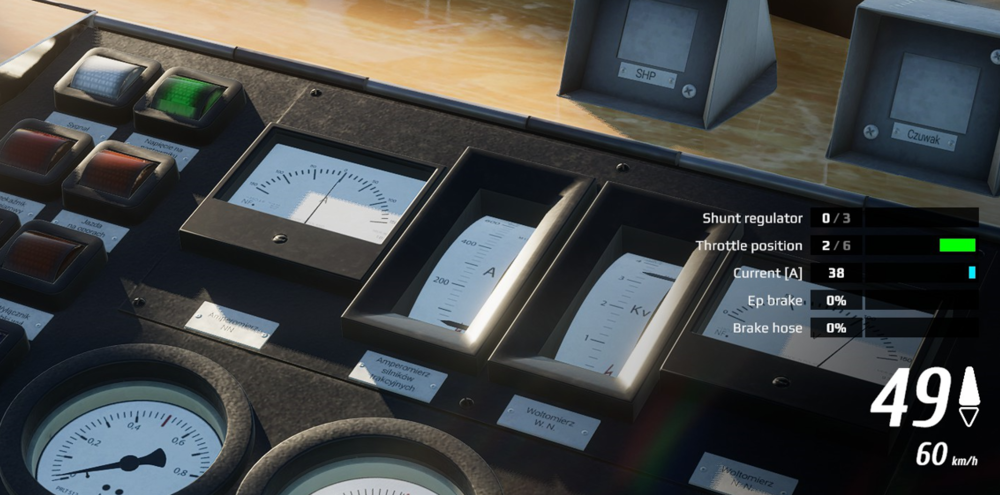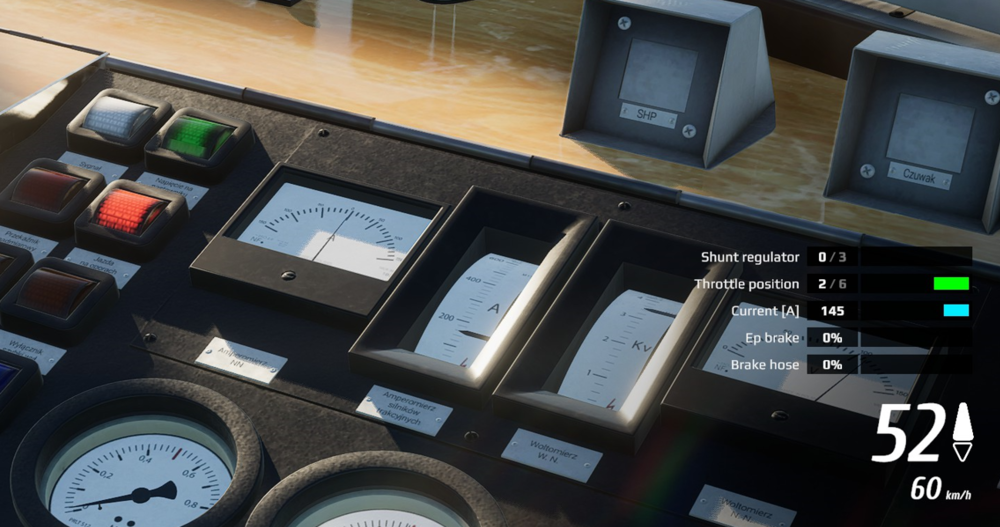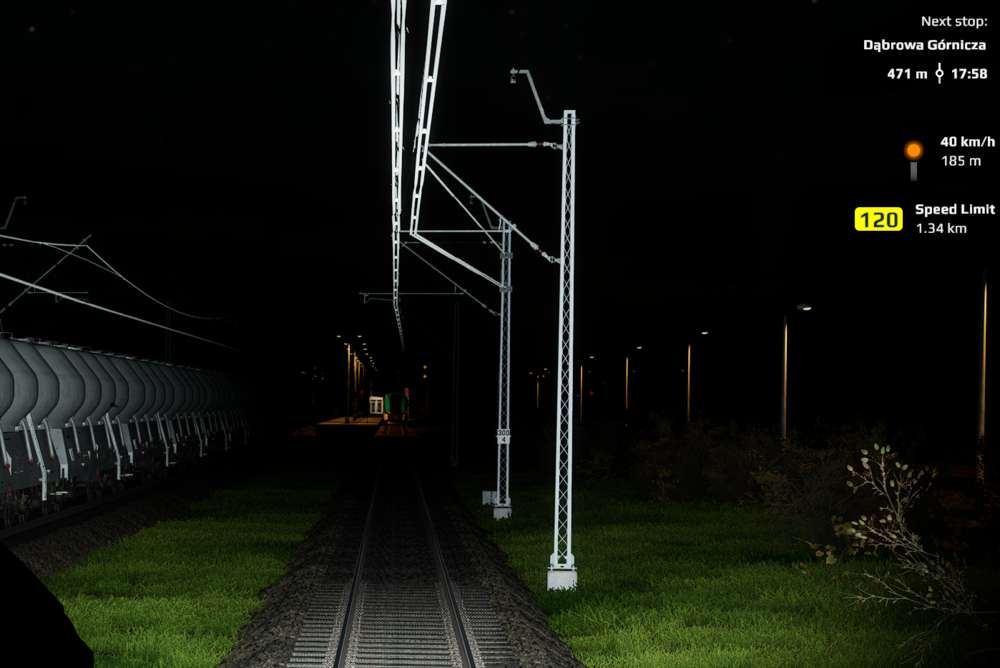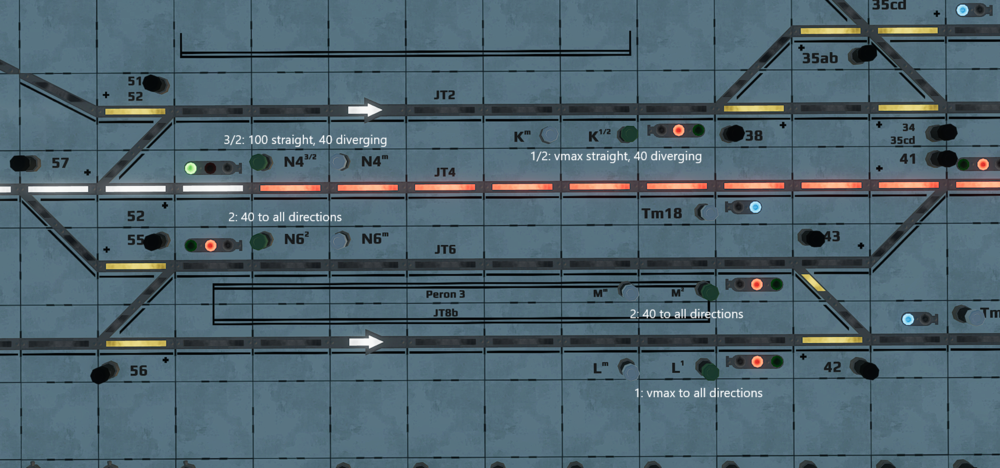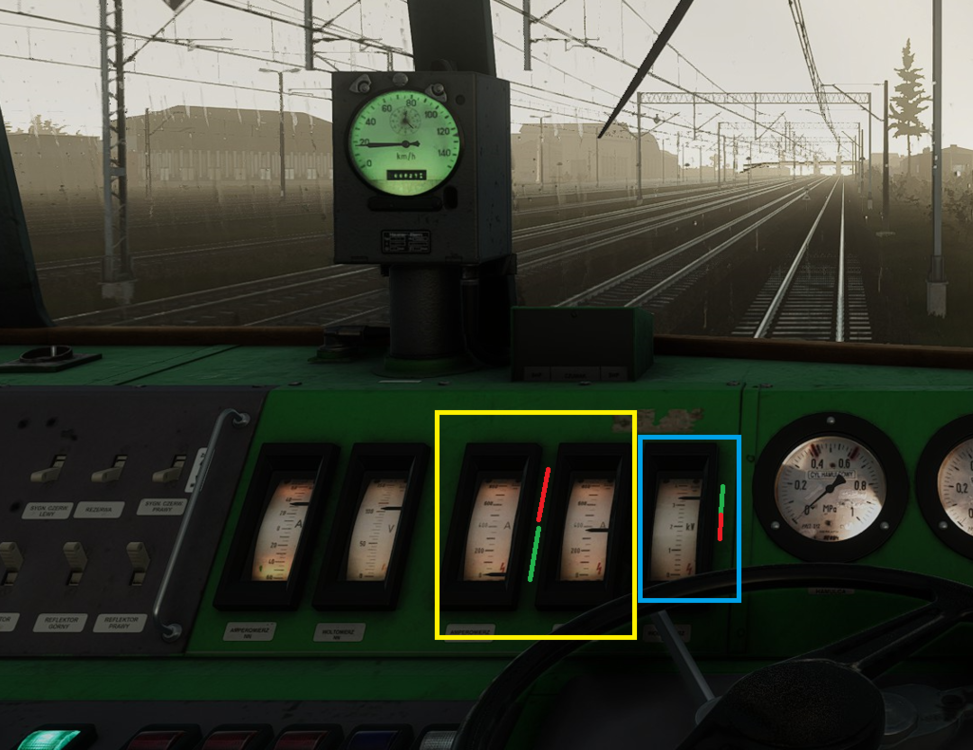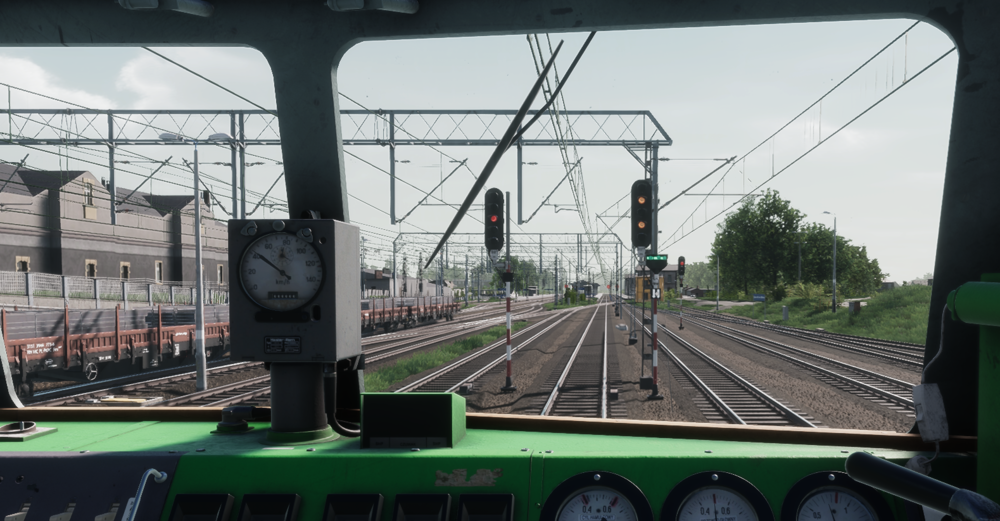-
Posts
31 -
Joined
-
Last visited
-
Days Won
2
Other groups
SimRail
Playtests
Early Access
noirceur last won the day on June 21 2023
noirceur had the most liked content!
Reputation
97 ExcellentRecent Profile Visitors
The recent visitors block is disabled and is not being shown to other users.
-
.thumb.png.e7b33607cc0b3c93efd2674aa9ff8285.png)
EN57 driving on resists incorrectly lit
noirceur posted a topic in General Discussion [Singleplayer]
When driving EN57 and needing to keep at 50-60 km/h, you need to juggle the power settings a lot, series is too little, parallel is too much. So I usually ride on series and only briefly move the power level to R to get the first notch there, and then I move it back S to prevent further notching up. What I believe should happen is that amps jump to the new level and Jazda na oporach light goes on, because it is not an economical notch. What happens now that there is one "invisible" notch between them that only lights the Jazda na oporach light, but does not actually increase the amps, and only a second notch increases the amps as well. The light alone without any power above full series does not make sense to me, I believe it should only light up after (together with) the jump in amps. Full series: Full series + 1 notch = only light turns on: Full series + 2 notches = amps go up: -
Dąbrowa Górnicza got into a deadlock situation today and stopping train got blocked in platform by a pendo coming from DGZ, but what also happened was allowing another train into the occupied platform where the stopping train was standing, setting this signal should not be possible (other than Sz). EN1 around 19:00 cet, involved trains 1431, 40182, 4134
-
I was wondering about the small superscript numbers by the signal names in Ząbkowice (like N43/2), turns out these encode what aspects will the signal show! Sadly it's not present in most other signal boxes.. 1: Vmax, 2: 40 km/h, 3: 100 km/h, 4: 60 km/h. If written in fractions, it shows straight/diverging speeds.
- 109 replies
-
- 11
-

-

-

-
This one was weird, I was running 442033 today and I was standing in Zawierce on red for around 20 minutes, and roughly at the time I got cleared path, the sim abruptly lost all sound, complete silence. After around a minute sound of environment returned as suddenly as it disappeared, but about half of the soundmix of the loco was missing, for example there was brake squeel, but no other brake-related sounds like air etc. Same for throttle, the wheel was clicking (EU07), but you could hear that the ventilator sounds are not as they use to be, many of the sounds they are mixed from were clearly missing. I have been playing since very early playtest, but never encountered anything similar, sometimes a sound or two is skipped, but never fullblown silence. I don't have an exact timestamp, but probably around 18:48-18:51 in the log. There are some exceptions in the log around that time that you might want to investigate. Server was EN1. SimRail_log_2023-12-23_18-31-16.txt
-
.thumb.png.e7b33607cc0b3c93efd2674aa9ff8285.png)
XP for neutral sections
noirceur replied to sf_giants15's topic in Suggestions for improvements [Multiplayer]
You can just turn off the main switch, that is always an option, but it's not very healthy for the loco to do so under power. Steering wheel tap changers don't have a lot of resistance to them though, they do the clicking sound, but you can still turn them for full rotation within half a second. Since the last patch you can just hold Num- and it will rotate rather quickly, or (at least before the patch you could) use Shift Num- to get to the nearest important position immediately. There are some shortcuts built in as in reality, so if the tap changer is set suddenly to zero, it does not have to go through individual notches down, but from I believe 27 it can jump to 1 immediately, for example. That speeds up the response of the engine to the controller a lot as well. What Atoka220 describes is something different, that's an "oh sh*t" button that you press in case of imminent crash (in siemens loks it's the giant red mushroom at the end of the panel). When you see that you are about to have a crash that directly threatens your life, you slam the button and run into the engine room where surrounded by all the heavy equipment, your chance to survive is much higher. The button takes care of all the necessary steps to secure the loco for crash and rescue operations (mainly it ensures that you don't get killed by electricity right as you enter the engine room, turns off MCB, lowers pantograph, sounds horn, sets light into "stop by all means possible" signal, and applies all brakes; varying by the manufacturer). It is definitely not meant to be used in regular operation. -
.thumb.png.e7b33607cc0b3c93efd2674aa9ff8285.png)
Is the EU07 a lame duck ? EDIT: NO, not any more !
noirceur replied to Glendathu's topic in General Discussion [Multiplayer]
Your main indication are the amperemeters (in yellow) - as a general rule of thumb that seems to be applicable across manufacturers, you want to keep those at the lower half of the scale shown. Then you should be safe from tripping the protections. What affects it is the available voltage (in blue), but I don't think it's simulated at the moment. If that drops lower than around 2,75 kV, you may need to apply less power than usual. Train heating affects it as well, but that's not usually problem with freight trains. There are couple trains in the game that are super heavy, but so far I could get anything moving without problems just by applying throttle carefully, I don't use any of the overcurrent modes, as they tend to increase wear and tear of the loco significantly. -
When player names containing CN/TW characters are displayed in dispatcher's F1 window, they make their line height slightly bigger than the other lines. This is not accounted for in the total window height, meaning the last line will be slightly cropped. I assume that with multiple such players present, the problem would stack up even more. EN1, English client
-
.thumb.png.e7b33607cc0b3c93efd2674aa9ff8285.png)
SimRail Controller hardware we've built.
noirceur replied to Gazz292's topic in General Discussion [Multiplayer]
^ Basically anyone who will start selling anything similar to german standardized dashboard (now used almost everywhere in europe in new loks) will make a fortune. -
If you don't have enough voltage for your usual level of power alongside heating, it's probably better idea to just use less power, than freezing your passengers.
-
Trains 73xxx usually need to exchange in DGZ with trains coming from DG on the main line before they can take a turn to DG Huta Katowice, and are for this reason stopped in the platform. However the signal sequence shown does not provide enough room to safely stop unless you know that you need to expect stop. Entrance signal shows expect 100 km/h, intermediary signal shows 100 km/h and expect stop on short distance, but the following signal showing stop is in distance that does not allow for comfortable stop even from 60 km/h, not speaking about higher speeds. From 100 km/h speed, even full emergency brake is only barely enough. I assume that as with other stations with similar sequencing it should signal 40 km/h and stop on short distance instead, which would make much more sense. Additionally, as these trains are not stopping in DGZ for passengers, it may be useful to direct them through the eastern (left) tracks when possible to avoid colliding paths altogether.
-
I see why it is asked, because many other countries have that as a part of safety protocol. Additionally, you will leave all passengers running late to be standing angrily at the platform, while the train is stopped twenty meters from them potentially even for minutes. Here, driver usually initiates departure upon checking: first, time of departure has passed, second, exit signal allows departure; by whistling "ready for departure" signal. Then, conductor checks if boarding is completed, closes all doors, whistles "caution" and waves at the train driver with green target/lantern. This is a cross-check implemented exactly to prevent train departing from platform before having consent to depart, potentially leaving on stop aspect.
-
In reality it's probably even 1-3 minutes, I suppose. Especially with Poland enforcing the 20 km/h limit, you really want to avoid doing so until absolutely necessary, because you will take like 3-4 minutes to go through the block instead of what, 40 seconds? The rule for passing red is there more for special occurrences that would otherwise require dispatcher to use Sz signal, as after autoblock cannot be any switch to cover or any train going across your path or against you. But for example railroad crossings connected to AB signals may stay open and unsecured. Passing it on red is not something you would do every day upon seeing one.
-
.thumb.png.e7b33607cc0b3c93efd2674aa9ff8285.png)
Tracks without catenary still indicates voltage
noirceur replied to noirceur's topic in Issues archive
Yeah, I assume that at some point we will have an electrical infrastructure update that will bring detailed simulation of everything, neutral sections, varying voltage with draw effects and more, but this still felt like something that should be fixed on its own earlier. Cancelling the path on system level (or simply locking the switches in place for now, if there is only few places like that) should be a quick fix. I saw that I am entering an unpowered track so i quickly lowered the panto before destroying it, but with how detailed other things like these are simulated in simrail, I genuinely expected that nothing happens once I raise it again, and that I would be just standing there until next restart without power.


.thumb.png.e7b33607cc0b3c93efd2674aa9ff8285.png)
